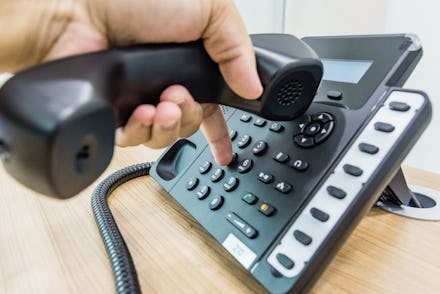Robocalls aren't just annoying — they're endangering people's health

Robocalls are an absolute scourge, lighting up our phones multiple times a day. It's bad enough when that is happening to your cell phone — but imagine you have a phone system that is essential for potentially vital communications and the spam calls are coming in with such regularity that your phone is rendered basically useless. According to a recent report from the Washington Post, that is exactly what happened to the Tufts Medical Center in Boston, Massachusetts last year when a robocalls flooded the hospital, leaving doctors and patients unable to communicate.
On April 30, 2018, Tufts received more than 4,500 calls between 9:30 a.m. and 11:30 a.m. That's 37.5 calls per minute, without respite, for two hours straight. The calls clogged the hospital's communications systems, making it difficult to get in a phone call before the line lit up again with another incoming message. According to hospital administrators, many of the calls were identical. The caller, speaking in Mandarin, threatened the recipient with deportation if they didn't provide personal information to confirm their identity. The barrage resulted in tied up phone lines and presented the risk of patients getting tricked by the calls.
While many robocalls feel completely scattershot, the incident at Tufts may have been a more targeted campaign. The Washington Post noted that Tufts is located in Boston's Chinatown neighborhood. While the calls weren't directed at any one individual, it seems as though the tactic could have been used in hopes of getting concerned and vulnerable people to surrender sensitive information about themselves. That information may be used later to further compromise the victim's life, be it through identity theft or opening a new line of credit in their name. While it wasn't disclosed if anyone at Tufts fell for the scam, it appears the calls were part of a widespread effort to target Chinese immigrants. Around the same time that the Boston hospital was being bombarded with calls, New Yorkers were on the receiving end of very similar messages that led to 21 people getting scammed out of a cumulative $2.5 million, according to the New York Police Department.
Hospitals and other institutions are placed in a difficult position when calls like this start pouring in. Unlike an individual who can simply ignore a call when they suspect it's from a spammer, these places have to pick up the phone. Hospitals in particular can't risk ignoring a call. So they instead must endure the barrage of calls.
Tufts isn't alone in getting overwhelmed by these types of calls. Earlier this year, Dave Summitt — the chief security officer for H. Lee Moffitt Cancer Center and Research Institute in Tampa, Florida — testified before Congress about a similar situation that his hospital dealt with. While the calls were less frequent, 6,600 in a 90-day period, Summitt described them as malicious. Spammers made the calls appear as though they were coming from within the center and attempted to manipulate doctors and patients into surrendering sensitive information.
These incidents present a troubling new front of robocalls, even as we're theoretically getting new tools to fight them. The Federal Communications Commission recently passed new rules that will allow telecommunications companies to automatically block robocalls before they reach a person's phone. The problem with the rule, though, is that carriers are not required to implement the new protections and are not prevented from charging consumers for keeping spam calls from getting through.
The FCC also has started down the road of requiring carriers to implement protocols that would verify a caller's identity and prevent robocalls from spoofing phone numbers. This would make it harder for spammers to disguise their calls, allowing both consumers and phone companies to quickly recognize a robocall and ignore or block it. You've probably run into this problem when a call that appears to be from your area code ends up having an automated voice on the other end of the line when you pick up. The FCC is giving carriers until the end of the year to deploy the necessary protocols, but there are real obstacles slowing the implementation. Carriers currently can't verify calls from other networks, for instance. The FCC also hasn't made clear if it will enforce any sort of punishment on carriers who fail to get the protocols up and running before year's end, so the incentive to move fast isn't really there.
While we continue to wait for telecom companies to take action — or for the government to force them into operating at a higher gear — the robocall problem continues to get worse. According to YouMail's Robocall Index, there were 4.7 billion robocalls placed in the United States in May. That's down from the absolute peak of 5.2 billion set in March of this year, but is still nearly double the amount of such calls that were made just two year prior. A plurality of the calls, 43.4% of them, are scams like those that overwhelmed doctors and patients at Tufts last year. The tools to prevent these types of calls cannot come fast enough.